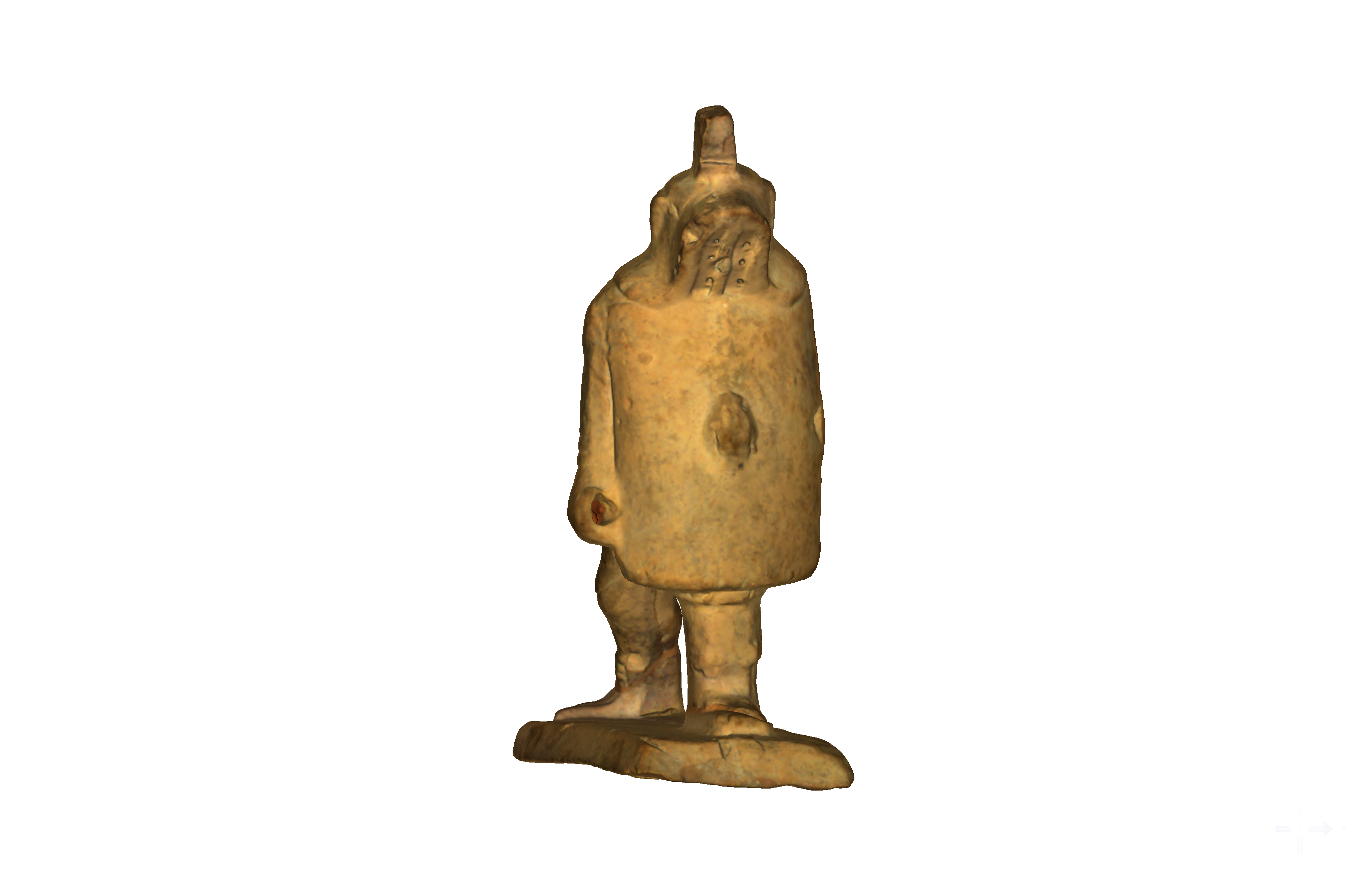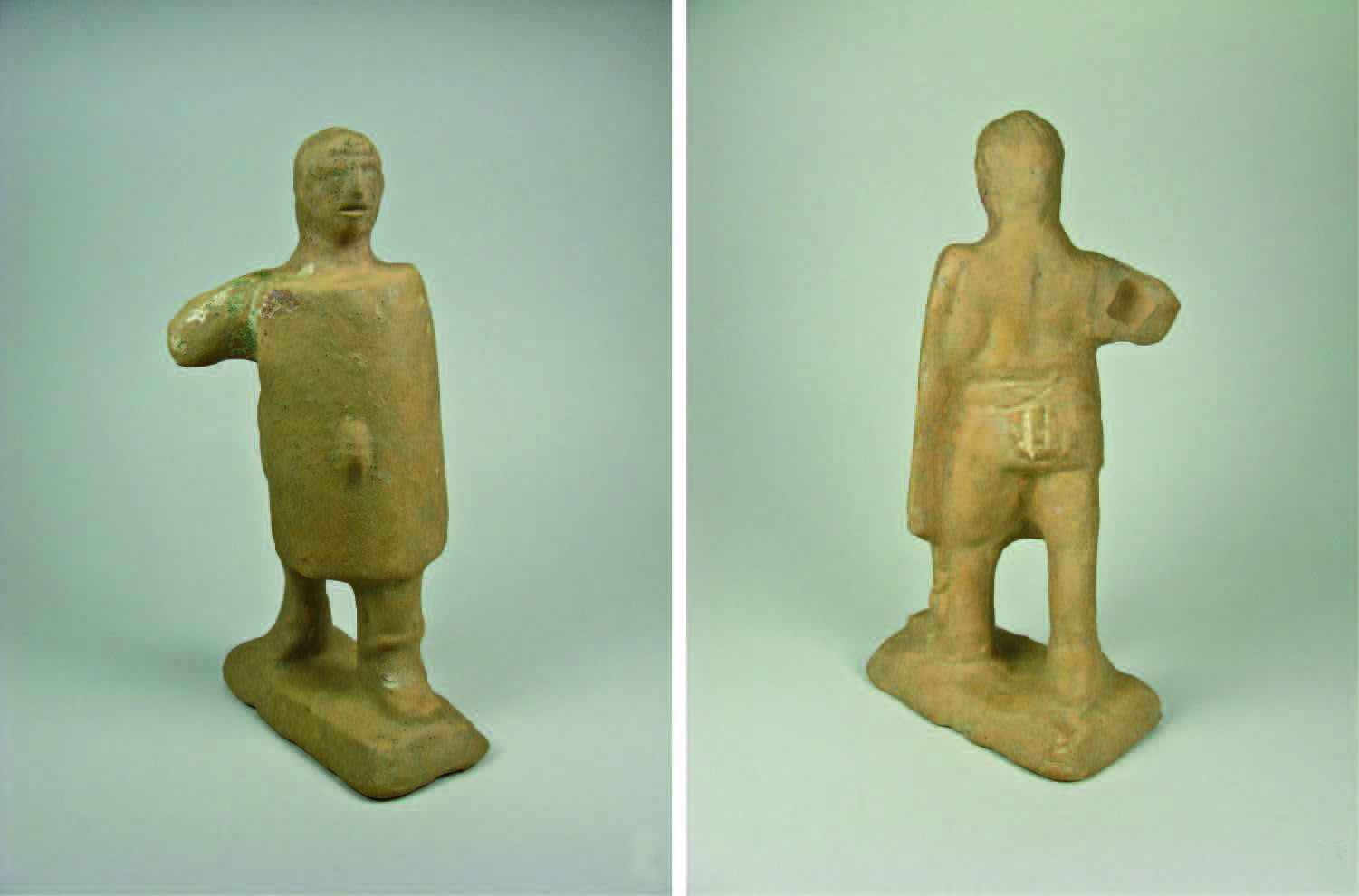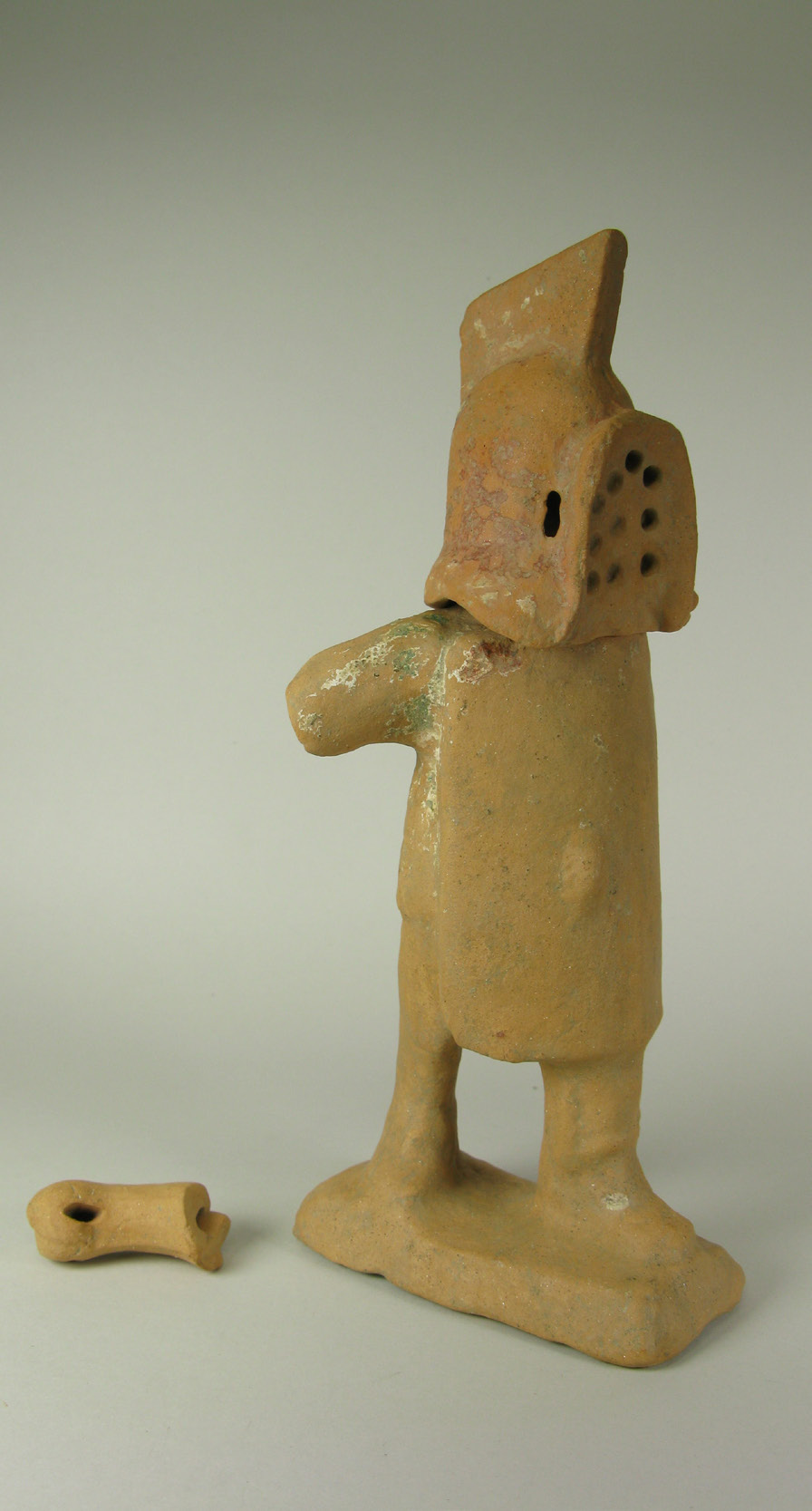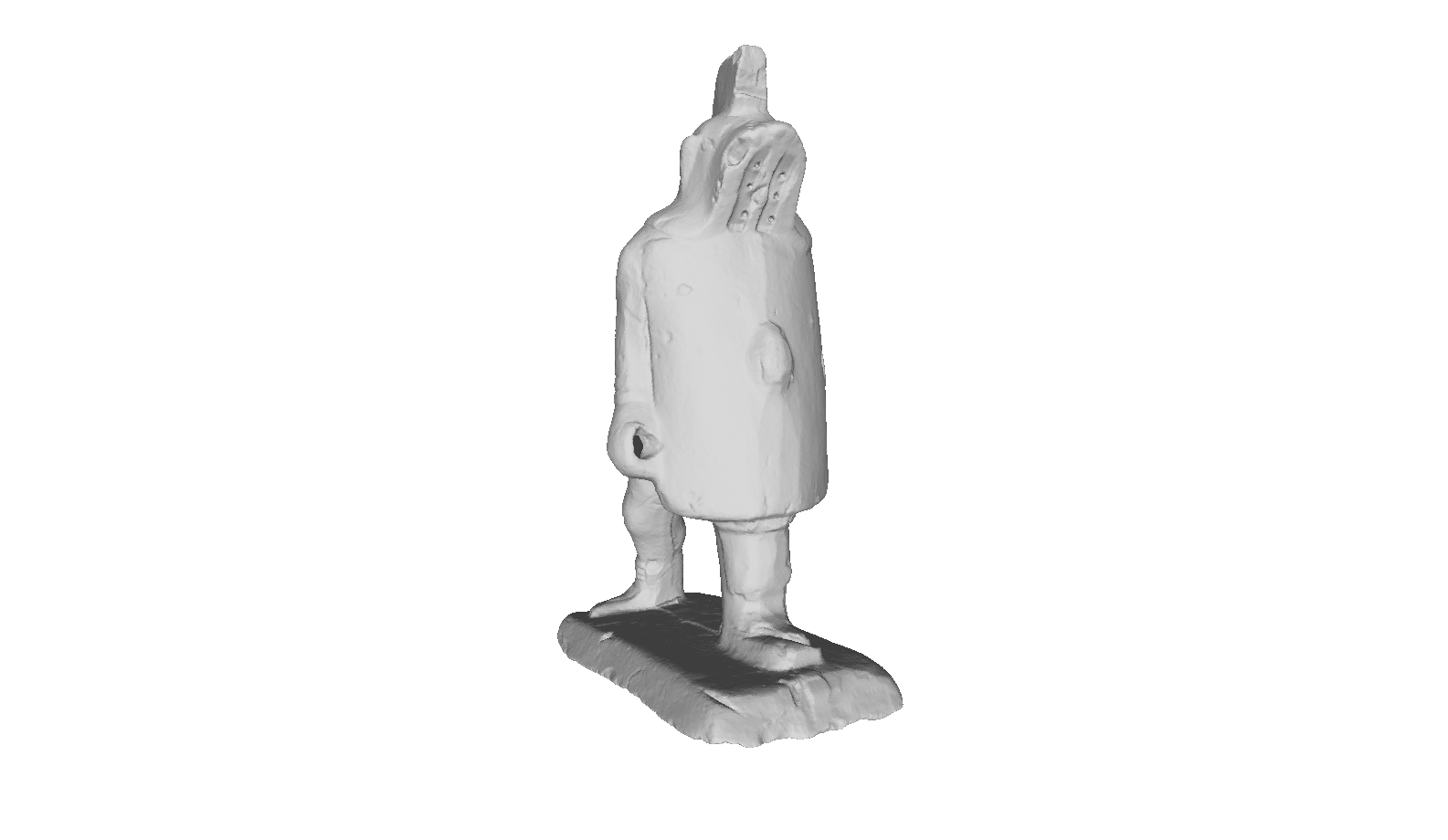Description
Click on the image to go full screen
Murmillo standing in a defensive posture, dressed with balteus and subligaculum covering the pelvis; head in axis with the body; left leg forward protected by short ocrea; right leg behind; left arm forward supporting the rectangular and curved scutum with central umbo; right arm behind covered by reinforced sleeve in correspondence of the hand; right hand clenched into a fist with elongated concavity, oval section, for holding a gladium made of other material.
Depurated pottery body; on the scutum traces of whitish engobe with dark red overpainting; on the right arm traces of whitish engobe with emerald green overpainting; on the neck traces of reddish engobe; on the left foot traces of whitish engobe; on the loincloth traces of whitish engobe. Right arm fragmentary but reconstructible, with small gap at the graft on the body.
This object was found inside a rich infant burial dating back to the second half of the 2nd century AD.
The burial, brought to light in the autumn of 2012 during an extensive urban archaeology investigation in the inner courtyard of numbers 141-143 Corso Vittorio Emanuele II, was part of a cemetery nucleus established in the early imperial age in the southern suburbs of the city.
The objecyt is a murmillo, one of the gladiators most present in iconography. The category, whose origins remain uncertain, was already known in the 1st century BC and saw a rapid increase in depictions in the first decades of the following century.
The iconographic model is indicative of the times and a reflection of the popularity enjoyed by gladiators in the height of the imperial age.




